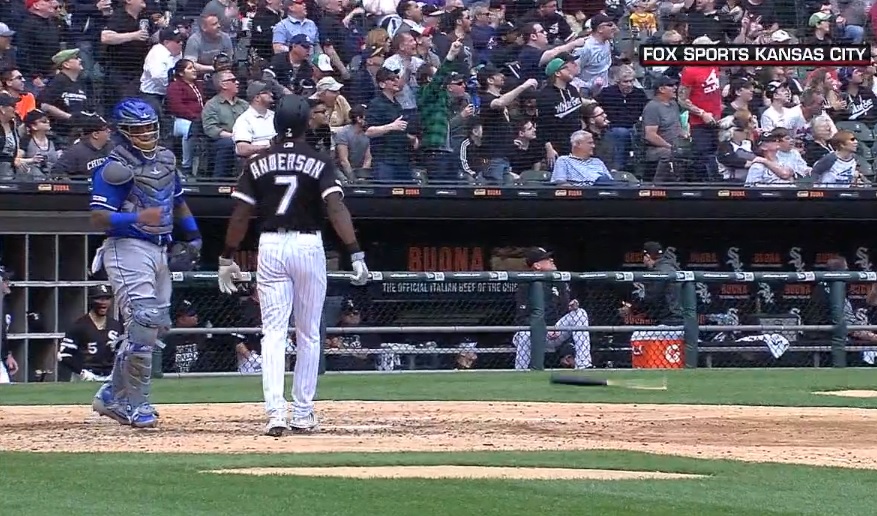
To judge by Friday’s game, the White Sox aren’t so big on the golden rule. Willson Contreras did unto them, unleashing a monster bat flip after homering in the third inning, and they responded by drilling the Cubs catcher in the back four innings later.
Sure, every party on the South Side denied intent. Manager Rick Renteria said that the pitch got away from reliever Jimmy Cordero. Cordero said that “the ball sunk a lot” and “was just a bad pitch.”
Said “sinker,” of course, was 98 mph and connected with Contreras’s upper back. It came with nobody on base, in the seventh inning of a game that the White Sox trailed, 7-0. There was no tail to it, just straight-line execution. It looked intentional from the moment it left Cordero’s hand.
Part of the issue here is the notion of drilling anybody for bat flipping in the modern climate. Contreras didn’t stare anybody down or show anybody up; to the contrary, he was looking directly at his teammates in the first-base dugout when he let loose his lumber.
The other part of the issue is that the modern climate exists thanks in huge part to a guy standing in the White Sox dugout when this all went down. Tim Anderson, of course, was at the center of a massive controversy last April, when he received similar treatment from the Royals for a bat flip of his own. At that time, the White Sox party line included defending Anderson’s rights to celebrate as he saw fit. This did not go unnoticed by the Cubs on Friday.
“All the hype was on the guy on the other side when [Anderson] bat-flipped, and we just let him play, right?” said Cubs manager David Ross afterward, in an NBC Chicago report. “I thought Tim Anderson’s bat flip last year, where he flipped it and looked in his dugout, that’s what you want. And that’s exactly what Willson did. He bat-flipped. It wasn’t to disrespect the other group. … Probably not my style if I’m playing, but these guys need a little bit of an edge. I don’t think he deserved to get hit at all. I don’t think you ever throw at somebody on purpose. It doesn’t make any sense.”
“I knew it was coming,” Contreras said afterward, in an MLB.com report, adding that there was nothing wrong with what he did. “I celebrated with my teammates,” he said. “I got pumped up. I wear my emotions below my sleeves. That was one thing that I did. I have no regrets—zero regrets.”
Umpires ejected Cordero, which raised the White Sox hackles, possibly because there had been no prior warning. Renteria and pitching coach Don Cooper ended up ejected, as well.
So now we’re left to wonder where the line is drawn, even against the bat-flippingest team in the land. Not everybody on every roster shares similar feelings about every issue, of course, but even those members of the White Sox with a distaste for that brand of showmanship must recognize that the face of their franchise is also the face of the entire Let the Kids Play movement. And that bears significant weight.
Renteria seemed to spell it out pretty clearly after Anderson’s bat-flip controversy last year, describing his player’s actions in almost the same terms that Ross did on Friday.
“Everybody has those ‘unwritten rules,’ everybody has their own, I guess,” he said last April, in a Chicago Sun-Times report. “Timmy wasn’t showing them up or showing the pitcher up, he was looking into our dugout, getting the guys going.”
But the manager didn’t stop there. Renteria then laid down a rule that his team in no way followed yesterday.
“Get him out,” he said. “You want him to not do that? Get him out.”
In retrospect, there’s nothing golden about that.
Update (9-26-20): Renteria and Cordero have both been suspended.







